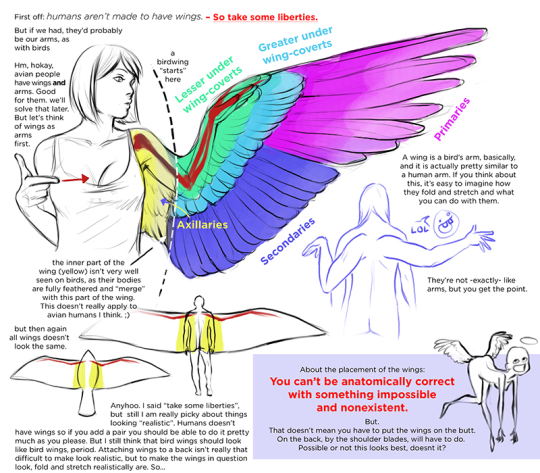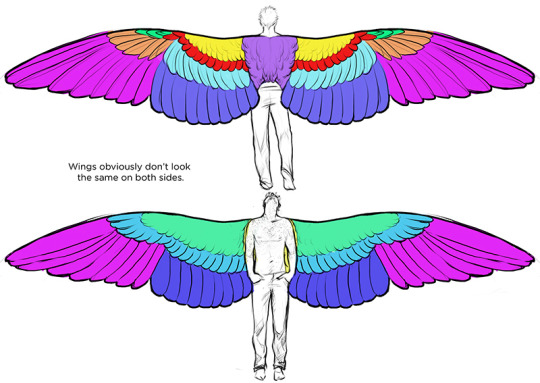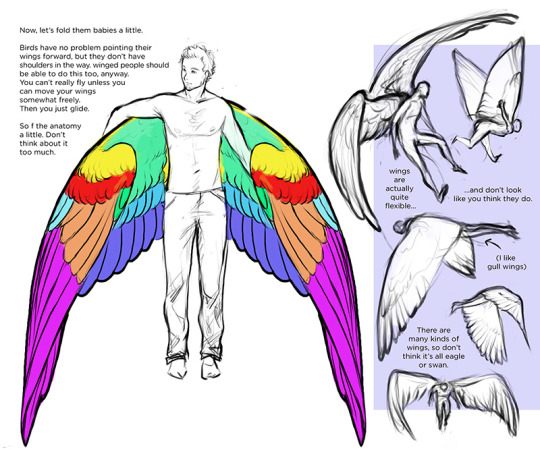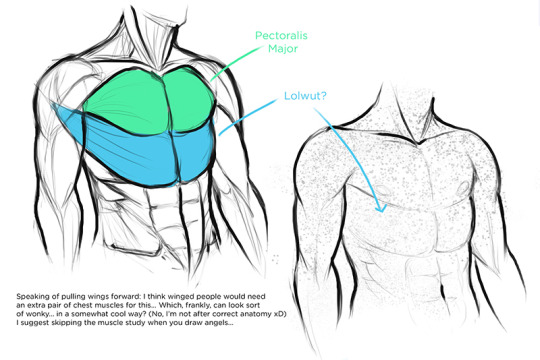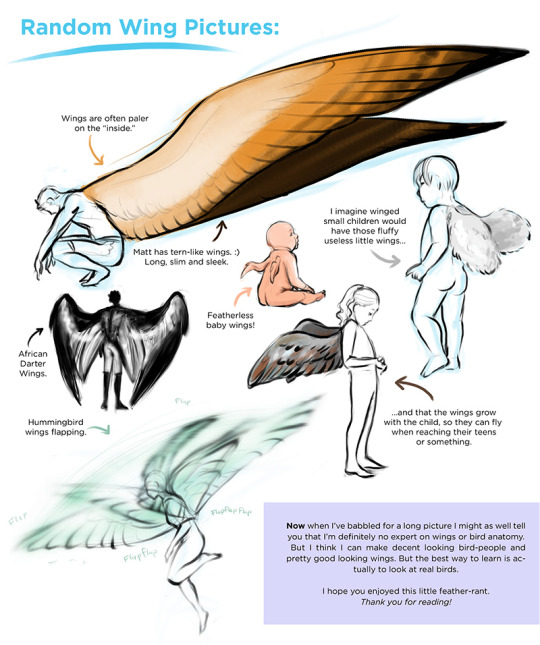Text

idk if anyone will find this useful, but this is how i go about planning my stories. i mostly write fantasy, so that’s what this is most applicable to. but it could work with other genres too.
so there’s three major components to a story: the characters, the plot, and the world. creating them individually is the easy part, but they all connect and affect each other in different ways. (like you can’t have a character who loves peaches and eats them every day if they live a peasant in a region that doesn’t grow peaches, for example.)
so i created a cheat sheet to help connect all three components together.
1) the world creates the characters.
this is related to the peach example above. the characters should be a direct result of the environment they grew up in and the environment they currently live in.
2) the characters are limited by the world.
also related to the peaches. characters can’t do anything outside of what the rules of their surroundings and universe allow, such as eating peaches when they’re not available. this also applies for magic users. they can’t have unlimited magic, so keep in mind what you want out of both the characters and the world when creating magic systems.
3) the characters carry the plot.
we’ve all heard it before: “bad characters can’t carry a good plot. good characters can carry a bad plot.” but we all like a good plot anyway. try to make sure you’re not giving your characters too heavy or too light of a plot to carry.
4) the plot pushes the characters.
if nothing in the plot happens, your characters will remain static forever. if you struggle with plots, try starting with what character development you want to happen, then go from there.
5) the plot depends on the world.
you can’t overthrow the evil government if there isn’t one. think of what your world needs most and what your plot is centered around, and fit those two together.
6) the world is changed by the plot.
even if your plot is centered around something most of your world would call “insignificant”, the world will still experience some change from the plot. either the evil government will be gone, or maybe that one teacher is now way more careful about keeping an eye on the test key. either way, the world will be different from now on.
final note: usually people will be able to write one or two of the components with ease, but don’t know where to go from there. i personally can’t write plots, but thinking this way has really helped me actually make a story out of the world and characters because i looked at what i needed from what i had. i really hope this can help you too! happy writing!
tl;dr this is a cheat sheet to help anyone who struggles with writing one or two of what i consider the three major components to a story.

78K notes
·
View notes
Video
352K notes
·
View notes
Text
What if Alien but set in the past, and instead of a Weyland-Yutani ship it’s a Dutch East India Trading Company ship, and instead of a Xenomorph it’s just a tiger that got on board?
7K notes
·
View notes
Text
The 9 Elements of a VILLAIN
If we’re being honest, one character is always the most fun to develop when you’re writing a new story. It must be the main character, right? The person you’re going to follow throughout the story, the one that means the most to you?
Nope. It’s the villain.
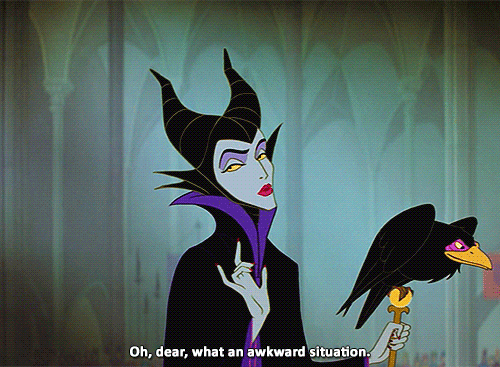
Villains are just FUN. You get to creep into the darkest corners of your writer brain and conjure up the most unashamedly detestable human being you possibly can.
This is how we look when we begin creating a villain.
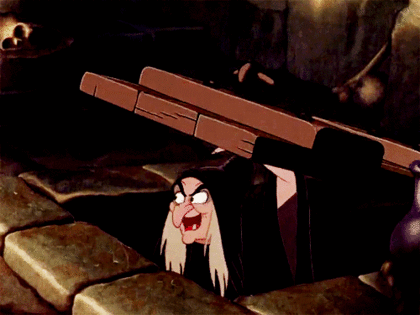
But sometimes, it can be difficult to to make sure they’re fully believable humans. So here are the nine elements that have helped me out when developing these terrible people …
1) Hero’s Shadow:
The relationship between the main character and the villain is the most important one in the story, because it is the source of all conflict. Without the villain causing trouble, the main character wouldn’t have the chance to be a hero. Without that trouble, the main character’s weaknesses wouldn’t be pressured, which means they couldn’t change. The villain is a condensed and magnified embodiment of the inner weakness that the hero is battling. They’re the SHADOW of hero, the example of what will happen if the main character goes down the wrong path. Both are facing the same problem in different ways. For example Darth Vader and Luke.
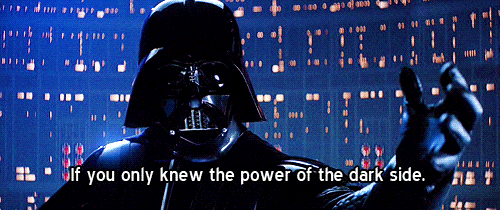
2) Conflict Strategy:
In the pursuit of stopping the hero from achieving their goal, the villain is going to attack them on 1) a personal relationship level 2) a societal level and 3) an inner level. They’re going to attack the people around them, they’re going to cause consequences for the community surrounding them, they’re going to get into their head and plague them. Because the hallmark of a villain is that they’re the person who’s perfectly suited to attack the hero’s greatest weakness. Villains should have a distinct set of tactics to destroy the main character, on at least two levels.
3) Flaws:
This one’s expected. Of course a villain has flaws, it’s in the job description. But flaws do not equate to ‘He kicks turtles every morning before breakfast’ or ‘His favorite hobby is butterfly stomping’ or, more within the realm of possibility, “He wants to kill the hero”. These are evil actions, NOT flaws. A lot of villains, particularly in movies, will be given horrible things to do without any explanation for WHY they do them. And it’s pretty easy to give them reasons: just give them human weaknesses! That’s it. Whether the actions they take are as small as theft or as big as blowing up a planet, these actions stem from recognizable HUMAN FLAWS. So like a main character, a villain needs mental and moral flaws.
Yup, even Maleficent has human flaws. And she’s a dragon part of the time.
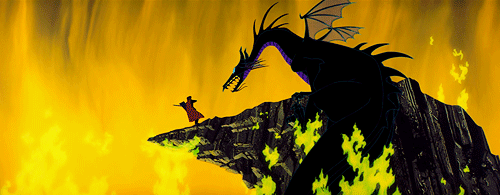
4) Counter Goal:
All characters exist because they want something. And what do villains want? To get whatever the main character wants (for very different reasons), to stop them from reaching their goal, or another goal that directly conflicts with the hero’s goal. As long as that big tangible thing they want locks hero and villain in battle, you’re good. Think 101 Dalmatians: Cruella and the good guys are fighting over the puppies.
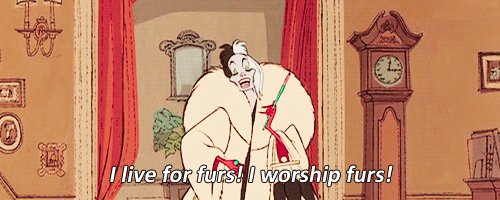
5) Surface Motivations:
Why is it that villains always have a team of followers? Because villains never outright state their true motivations. They always have a cover story, and that cover will paint them as righteous. Villains want to look like the good guy. So their real Hidden Motivations are defended by twisting perceptions of Good & Evil, by portraying evil acts in a positive light, by indulging their followers selfish emotions and desire to feel like “one of the good guys. “
Take Gothel for example: she’s a loving mother who wants to protect her daughter from all the world’s darkness. (Sure you do, Flynn stabber.)
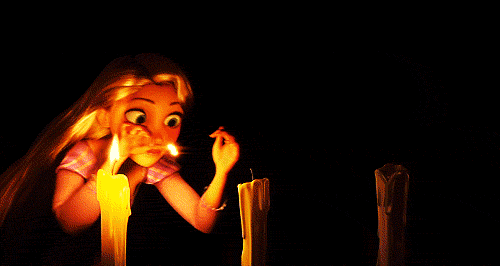
Surface Motivations never stand up to logical scrutiny and a functioning moral compass, but giving your bad guy a compelling argument against your good side always makes things more interesting, which brings us to …
6) Counter Statement:
The main character needs to learn some kind of truth that will enable them to fix their lives, overcome their weaknesses, banish their ghosts. It’s whatever statement about "how to live a better life” you want to prove with your story. Your villain has other ideas. They don’t agree with that statement, have other beliefs about living life well, and represent an argument against it. For example, Voldemort: “there is no good and evil, there is only power, and those too weak to seek it."
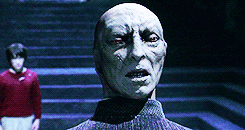
Although your argument isn’t very convincing, Voldy. I mean, you’re living in the back of some guy’s head.
7) Characterization:
This is everything on the surface of the villain. The way they speak, the way they look, the way they act, their role in life, their status and power. This is the facade they project for the world to see, a calculated effort to control how they are perceived. This is closely connected to that surface want, because that surface is what they wish people to believe about them. Over time, the reader and the other characters are going to be able to see through this mask and see what it conceals. My favorite Disney example of this is Mother Gothel: on the surface she’s this bubbly mom who loves Rapunzel and wants to protect her from the harshness of the world.
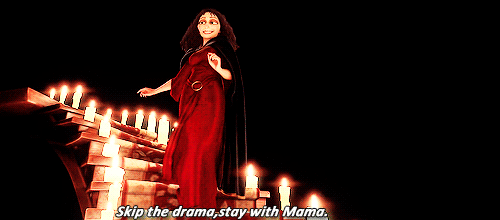
You can think of this as the text …
8) Hidden Motivation:
And this is the subtext. That surface motivation they want the world to believe is a mask concealing their true motivation, which is always rooted in their flaws, selfishness, and skewed beliefs.
9) Ghosts, Justification, Self-Obsession:
These three are closely related, so they get counted together. Like main characters, villains have GHOSTS: events from their backstories that knocked their worldviews out of alignment, that marked the beginning of their weaknesses, that haunt them still. Because these happened, the originally benign person allowed themselves to turn into someone who could occupy the job of "villain” in a story. Usually, these events are genuine misfortunes and are worthy of sympathy, just like the ghosts of a main character. Think of Voldemort growing up in an orphanage talking to snakes.
BUT! When it comes to ghosts, the major difference between a hero and a villain is HOW THEY DEAL with these unpleasant past events. Both have suffered, but react to suffering in very different ways. A villain will be consumed by these events, obsessed with the real (or imagined) persecution or disadvantage they’ve endured, convinced that all personal responsibility is nullified by their status of injured party. Past tragedies become a talisman that grants immunity from decency.
This scene from A Series of Unfortunate Events sums it up. An adult makes an excuse for a terrible person by saying he had a terrible childhood. And Klaus replies:
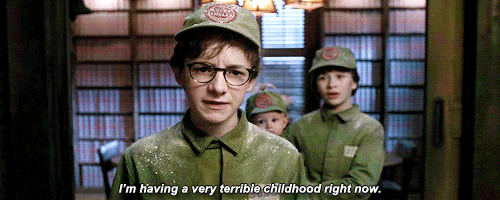
Yes, maybe they’ve both lived through tragedy. But THE KIDS aren’t hurting others because of it.
Because villains, who are constantly victimizing heroes, are completely convinced that THEY are the true victims here. No matter what they do, no matter what they are, they blame everything on that ghost, whether it was another person, society, or circumstances. And later they blame the hero, who they see as the REAL villain. For example, Frollo from The Hunchback of Notre Dame:
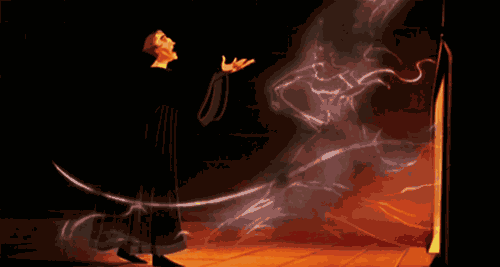
“It’s not my fault, I’m not to blame”
So! WHY are villains like this?
SELF-OBSESSION! Yup, villains spend an unhealthy amount of time thinking about themselves and their plights and their plots. Think of any villain and it’s not hard to see the inherent narcissism behind everything they do. Like willingness to take action is the nonnegotiable trait of a main character, self-obsession is the trait that all villains seem to share.
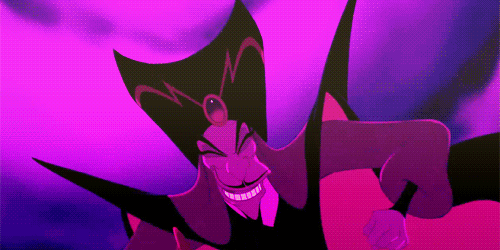
So! Developing villains in this way has worked out for me so far. If it looks like it might be helpful for you, give it a try.
And in the spirit of creating someone to torment our main characters and ruin their lives, here’s one more maniacal laugh for the road:
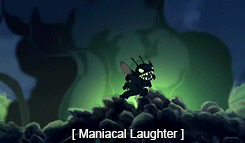
18K notes
·
View notes
Text
Random sci fi bit:
Someone walks into a room announcing, “I hate to be the bearer of bad news…” and their alien friend spits water because the translator said, “I’m unhappily pregnant with new evil.”
80K notes
·
View notes
Text
derive your fantasy settings from somewhere other than medieval europe you cowards
30K notes
·
View notes
Text
You, a historian, find something odd in your records. The same face, accompanied with variations of the same name, keeps emerging in paintings, drawings, woodcarvings and documents, from a span of several centuries. It looks suspiciously like your assistant.
8K notes
·
View notes
Text
Dragon protecting princesses because of abusive parents or forced marrying.
140K notes
·
View notes
Text
You were born on a colonizing spacecraft on your way to a distant star. You are the middle generation of history; born to late to have seen Earth, and to early to live to see your destination.
2K notes
·
View notes
Text
You live in a world where magic exists, however, you must sacrifice a memory in order to cast a spell. The more memories, or the more precious a memory, the more powerful the magic. You just woke up with no memory save a name.
5K notes
·
View notes
Text
You live in a world where magic exists, however, you must sacrifice a memory in order to cast a spell. The more memories, or the more precious a memory, the more powerful the magic. You just woke up with no memory save a name.
5K notes
·
View notes
Text
A massive hole appears in the sky, swallowing earth in a moment. We find ourselves orbiting a new sun… and more holes are appearing, dumping more and more planets into the solar system.
2K notes
·
View notes
Text
Your Character’s Personality
Personality is the most important thing about your character.
So, whenever I see character sheets, most people just put a little paragraph for that section. If you’re struggling and don’t know what your character should say or do, what decisions they should make, I guarantee you that this is the problem.
You know your character’s name, age, race, sexuality, height, weight, eye color, hair color, their parents’ and siblings’ names. But these are not the things that truly matter about them.
Traits:
pick traits that don’t necessarily go together. For example, someone who is controlling, aggressive and vain can also be generous, sensitive and soft-spoken. Characters need to have at least one flaw that really impacts how they interact with others. Positive traits can work as flaws, too. It is advised that you pick at least ten traits
people are complex, full of contradictions, and please forgive me if this makes anyone uncomfortable, but even bullies can be “nice” people. Anyone can be a “bad” person, even someone who is polite, kind, helpful or timid can also be narcissistic, annoying, inconsiderate and a liar. People are not just “evil” or “good”
Beliefs:
ideas or thoughts that your character has or thinks about the world, society, others or themselves, even without proof or evidence, or which may or may not be true. Beliefs can contradict their values, motives, self-image, etc. For example, the belief that they are an awesome and responsible person when their traits are lazy, irresponsible and shallow. Their self-image and any beliefs they have about themselves may or may not be similar/the same. They might have a poor self-image, but still believe they’re better than everybody else
Values:
what your character thinks is important. Usually influenced by beliefs, their self-image, their history, etc. Some values may contradict their beliefs, wants, traits, or even other values. For example, your character may value being respect, but one of their traits is disrespectful. It is advised you list at least two values, and know which one they value more. For example, your character values justice and family. Their sister tells them she just stole $200 from her teacher’s wallet. Do they tell on her, or do they let her keep the money: justice, or family? Either way, your character probably has some negative feelings, guilt, anger, etc., over betraying their other value
Motives:
what your character wants. It can be abstract or something tangible. For example, wanting to be adored or wanting that job to pay for their father’s medication. Motives can contradict their beliefs, traits, values, behavior, or even other motives. For example, your character may want to be a good person, but their traits are selfish, manipulative, and narcissistic. Motives can be long term or short term. Everyone has wants, whether they realize it or not. You can write “they don’t know what they want,” but you should know. It is advised that you list at least one abstract want
Recurring Feelings:
feelings that they have throughout most of their life. If you put them down as a trait, it is likely they are also recurring feelings. For example, depressed, lonely, happy, etc.
Self Image:
what the character thinks of themselves: their self-esteem. Some character are proud of themselves, others are ashamed of themselves, etc. They may think they are not good enough, or think they are the smartest person in the world. Their self-image can contradict their beliefs, traits, values, behavior, motives, etc. For example, if their self-image is poor, they can still be a cheerful or optimistic person. If they have a positive self-image, they can still be a depressed or negative person. How they picture themselves may or may not be true: maybe they think they’re a horrible person, when they are, in fact, very considerate, helpful, kind, generous, patient, etc. They still have flaws, but flaws don’t necessarily make you a terrible person
Behavior:
how the character’s traits, values, beliefs, self-image, etc., are outwardly displayed: how they act. For example, two characters may have the trait “angry” but they all probably express it differently. One character may be quiet and want to be left alone when they are angry, the other could become verbally aggressive. If your character is a liar, do they pause before lying, or do they suddenly speak very carefully when they normally don’t? Someone who is inconsiderate may have issues with boundaries or eat the last piece of pizza in the fridge when they knew it wasn’t theirs. Behavior is extremely important and it is advised you think long and hard about your character’s actions and what exactly it shows about them
Demeanor:
their general mood and disposition. Maybe they’re usually quiet, cheerful, moody, or irritable, etc.
Posture:
a secondary part of your character’s personality: not as important as everything else. It is advised you fill this out after. Posture is how the character carries themselves. For example, perhaps they swing their arms and keep their shoulders back while they walk, which seems to be the posture of a confident person, so when they sit, their legs are probably open. Another character may slump and have their arms folded when they’re sitting, and when they’re walking, perhaps they drag their feet and look at the ground
Speech Pattern:
a secondary part of your character’s personality: not as important as everything else. It is advised you fill this out after. Speech patterns can be words that your character uses frequently, if they speak clearly, what sort of grammar they use, if they have a wide vocabulary, a small vocabulary, if it’s sophisticated, crude, stammering, repeating themselves, etc. I personally don’t have a very wide vocabulary, if you could tell
Hobbies:
a secondary part of your character’s personality: not as important as everything else. It is advised you fill this out after. Hobbies can include things like drawing, writing, playing an instrument, collecting rocks, collecting tea cups, etc.
Quirks:
a secondary part of your character’s personality, not as important as everything else. It is advised you fill this out after. Quirks are behaviors that are unique to your character. For example, I personally always put my socks on inside out and check the ceiling for spiders a few times a day
Likes:
a secondary part of your character’s personality, not as important as everything else. It is advised you fill this out after. Likes and dislikes are usually connected to the rest of their personality, but not necessarily. For example, if your character likes to do other people’s homework, maybe it’s because they want to be appreciated
Dislikes:
a secondary part of your character’s personality, not as important as everything else. It is advised you fill this out after. Likes and dislikes can also contradict the rest of their personality. For example, maybe one of your character’s traits is dishonest, but they dislike liars
History:
your character’s past that has key events that influence and shape their beliefs, values, behavior, wants, self-image, etc. Events written down should imply or explain why they are the way they are. For example, if your character is distrustful, maybe they were lied to a lot by their parents when they were a child. Maybe they were in a relationship for twenty years and found out their partner was cheating on them the whole time. If their motive/want is to have positive attention, maybe their parents just didn’t praise them enough and focused too much on the negative
On Mental and Physical Disabilities or Illnesses
if your character experienced a trauma, it needs to have an affect on your character. Maybe they became more angry or impatient or critical of others. Maybe their beliefs on people changed to become “even bullies can be ‘nice’ people: anyone can be a ‘bad’ person”
people are not their illness or disability: it should not be their defining trait. I have health anxiety, but I’m still idealistic, lazy, considerate, impatient and occasionally spiteful; I still want to become an author; I still believe that people are generally good; I still value doing what make me feel comfortable; I still have a positive self-image; I’m still a person. You should fill out your character’s personality at least half-way before you even touch on the possibility of your character having a disability or illness
Generally everything about your character should connect, but hey, even twins that grew up in the same exact household have different personalities; they value different things, have different beliefs. Maybe one of them watched a movie that had a huge impact on them.
Not everything needs to be explained. Someone can be picky or fussy ever since they were little for no reason at all. Someone can be a negative person even if they grew up in a happy home.
I believe this is a thought out layout for making well-rounded OCs, antagonists and protagonists, whether they’re being created for a roleplay or for a book. This layout is also helpful for studying Canon Characters if you’re looking to accurately roleplay as them or write them in fanfiction or whatever.
I’m really excited to post this, so hopefully I didn’t miss anything important…
If you have any questions, feel free to send a message.
- Chick
102K notes
·
View notes
Text
Okay, this is in incredibly petty nitpick, but: if you’re writing a fantasy setting with same-sex marriage, a same-sex noble or royal couple typically would not have titles of the same rank - e.g., a prince and a prince, or two queens.
It depends on which system of ranking you use, of course (there are several), but in most systems there’s actually a rule covering this scenario: in the event that a consort’s courtesy title being of the same rank as their spouse’s would potentially create confusion over who holds the title by right and who by courtesy, the consort instead receives the next-highest title on the ladder.
So the husband of a prince would be a duke; the wife of a queen, a princess; and so forth.
(You actually see this rule in practice in the United Kingdom, albeit not in the context of a same-sex marriage; the Queen’s husband is styled a prince because if he were a king, folks might get confused about which of them was the reigning monarch.)
The only common situation where you’d expect to see, for example, two queens in the same marriage is if the reigning monarchs of two different realms married each other - and even then, you’d more likely end up with a complicated arrangement where each party is technically a princess of the other’s realm in addition to being queen of her own.
You’ve gotta keep it nice and unambiguous who’s actually in charge!
118K notes
·
View notes
Text
Female Characters to Avoid in your Writing: An Illustrated Guide.
1. The Bella Swan (i.e. the blank sheet of paper)

Who she is:
In Twilight, Bella has absolutely no qualities that make her interesting as a character. She’s shown to have very little personality, in the books or onscreen, and is only made “interesting” (a relative term here) via the inclusion of her sparkly, abusive boyfriend. It feeds into the harmful mentality of adolescent girls that you need a significant other in order to find fulfillment, particularly if he’s significantly older and likes to watch you sleep. Yikes.
Examples:
Bella is welcomed to school by a friendly, extroverted girl and given a place to sit amongst her and her friends. Despite this girl’s kindness, Bella shrugs her off as a stereotypical shallow cheerleader, and spends her time staring wistfully at the guy across the cafeteria from them. Once Edward becomes her official boyfriend, she immediately loses interest in her new friends as her life shifts its orbit to revolve completely around him.
How to avoid her:
Female characters are allowed to have lives outside of their significant others. They’re allowed to have friends, quirks, hobbies, and interests. Give them some.
The best fictional relationships are based off of characters who compliment each other, not one character who revolves around the other. Make sure your female character’s life does not centralize around her significant other.
Strong female characters don’t look down on other girls, even if they are outgoing cheerleaders. Being pasty and introverted doesn’t make you a better person, y’all – if it did, I’d be a decorated hero by now.
Give them aspirations besides getting an obsessive, much-older boyfriend. In fact, don’t give them an obsessive, much-older boyfriend at all – if you do want them to have a significant other, give them one who cares about their interests and accepts that they have lives and goals outside of them.
2. The Molly Hooper (i.e. the starry-eyed punching bag)

Who she is:
Like most things about BBC’s Sherlock, Molly was an amazing concept that went progressively downhill. I used to love her quiet tenacity and emotional intelligence, and was sure that with her strong basis as a character, she would overcome her infatuation with the titular Sherlock and find self-fulfillment. Nope!
Examples:
She remained stubbornly infatuated over the course of five years with an ambiguously gay man who, en large, treated her badly, leading to her public humiliation with zero pertinence to the plot or resolution. Moreover, her infatuation with Sherlock quickly usurped almost all of her other characteristics, leading her to an increasingly immature characterization that was difficult to relate to.
How to avoid her:
By all means, please write female characters who are quiet, kind, and unassuming (a female character does not, contrary to popular belief, need to be rambunctious, callous, or violent to be “strong”) but remember than none of these traits need to make the character a pushover. Let them stand their ground.
Similarly, attraction to men (or anyone, for that matter) does not invalidate a female character’s strength. Just be sure she values herself more than their attention.
As I said earlier, don’t be afraid to make characters who are gentle and soft-spoken, but be wary of making them “childlike,” or giving them an infantile, emotionally characterization.
My best advice for writing gentle, soft-spoken, unassuming women would actually to look to male characters in the media fitting this description; since male characters are rarely infantilized as much as women are by popular media, you’ll get a much better idea of what a well-rounded character looks like.
3. The Irene Adler (i.e. the defanged badass)

Who she is:
Yup, another one of the BBC Sherlock women, among whom only Mrs. Hudson seemed to come through with her dignity and characterization intact. In the books, Irene and Sherlock have absolutely zero romantic connotations, only bonded via Sherlock’s irritation and respect with her substantial intelligence. In the show, it’s a different story entirely.
Examples:
Irene is a badass character who’s turned into a teary-eyed Damsel in Distress via her uncontrollable love for the show’s male lead. It doesn’t help matters that she’s a self-proclaimed lesbian who falls in love with a man, which, unless you’re a woman who loves women yourself and writing about a character realizing she’s bi/pansexual, I would recommend against doing under any circumstances. She ends up being defeated and subsequently rescued by Sherlock – a far cry from her defeat of him in the books.
How to avoid her:
If you’re writing a badass female character, allow her to actually be badass, and allow her to actually show it throughout your work as opposed to just hearing other characters say it. And one punch or kick isn’t enough, either: I want to see this chick jump out of planes.
That said, “badass” does not equal emotionally callous. It doesn’t bother me that Moffat showed Irene having feelings for someone else, what bothers me is how he went about it.
When writing a character who’s shown to be attracted to more than one gender, just say she’s bisexual. Pansexual. Whatever, just don’t call her straight/gay depending on the situation she’s in. Jesus.
4. The Becky (i.e. the comedic rapist)

Who she is:
Most people who know me can vouch for my adoration of Supernatural, but it definitely has its problems: it’s not as diverse as it could be, its treatment of women is subpar, and yes, there is some thinly veiled sexual violence: all three of its leading characters have dealt with it at one point of another (Dean is routinely groped by female demons, a virginal Castiel was sexually taken advantage of by a disguised reaper, and the whole concept of sex under demonic possession is iffy to say the least.) It’s rarely ever addressed afterwards, and is commonly used for comedic fodder. Possibly the most quintessential example of this is Becky.
Examples:
Becky abducts Sam, ties him to the bed, and kisses him against his will. She then drugs him, albeit with a love potion, and is implied to have had sex with him under its influence.
How to avoid her:
Male rape isn’t funny, y’all. Media still takes rape against women a lot more seriously than rape against men, particularly female-on-male rape, and I can assure you its not.
Educate yourself on statistics for male sexual assault: approximately thirty-eight percent of sexual violence survivors are male, for example, and approximately one in sixteen male college students has reported to have experienced sexual assault.
Moreover, be aware that forty-six percent of all instances of male rape have a female perpetrator.
Read more here in this amazing article: http://www.slate.com/articles/double_x/doublex/2014/04/male_rape_in_america_a_new_study_reveals_that_men_are_sexually_assaulted.html
In other words, treat themes of sexual assault against men as seriously as you would treat themes of sexual assault against women.
5. The Movie Hermione (i.e. the flawless superhuman)

Who she is:
Okay, in and of herself, Movie Hermione is amazing: she’s beautiful, intelligent, and heroic, as well as possibly the most useful character of the franchise. She only bothers me in context of the fact that she takes away everything I loved most about Book Hermoine, and everything I loved about Book Ron, too.
Examples:
Book Hermione was beautiful, but not conventionally: she had big, poofy curls, big teeth, and didn’t put a lot of effort into maintaining her appearance. Movie Hermione looks effortlessly flawless, all the time. Book Hermione was intelligent, but also loud, abrasive, and unintentionally annoying when talking about her interests (which meant a lot to me, because as a kid on the Asperger’s spectrum, I frequently was/am that way myself – it was nice to see a character struggling with the same traits). She was also allowed to have flaws, such as struggling to keep up with academia, and being terrified of failure.
Movie Hermione also took all of Ron’s redeeming qualities, and everything that made him compliment her as a couple: his street smarts used to compliment her academic intelligence, for example, staying calm while she panicked in the Philosopher’s Stone when they were being overcome with vines. He also stood up for her in the books against Snape, as opposed to the jerkish “he’s right, you know.”
How to avoid her:
Allow your female characters to have flaws, as much so as any well-rounded male character. Just be sure to counterbalance them with a suitable amount of redeeming qualities. This will make your female character well-rounded, dynamic, and easy to get invested in.
There’s no reason for your female characters to always look perfect. Sure, they can be stunningly gorgeous (particularly if their appearance is important to them), but it’s physical imperfections that make characters fun to imagine: Harry’s scar and wild hair, for example. Female characters are no different.
If you’re writing a female character to have an eventual love interest, allow their personalities to compliment one another. Allow the love interest to have qualities that the female character is lacking, so that they can compliment one another and have better chemistry.
Basically, write your female characters as people.
Check out my list of male characters to avoid here: https://thecaffeinebookwarrior.tumblr.com/post/161184030785/male-protagonists-to-avoid-in-your-writing-an.
God willing, I will be publishing essays like this approximately every Friday, so be sure to follow my blog and stay tuned for future writing advice and observations!
48K notes
·
View notes
